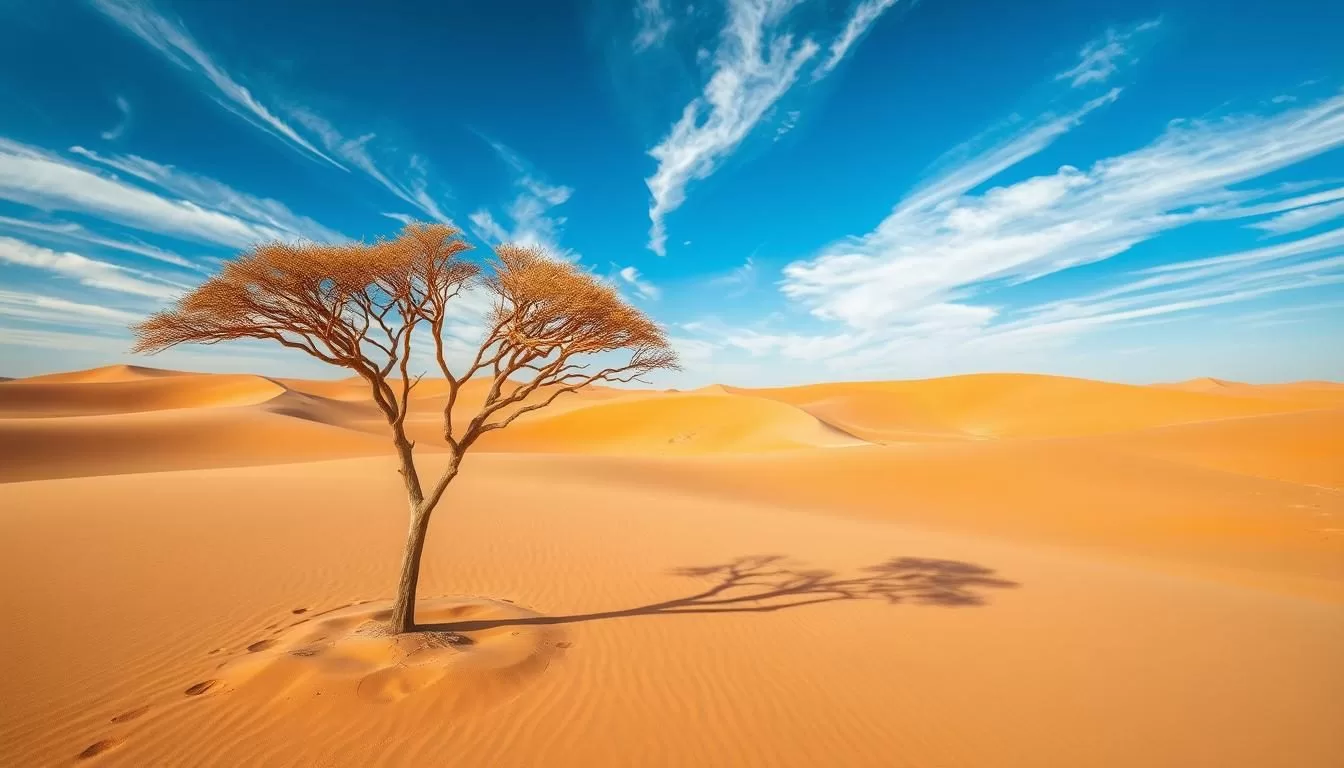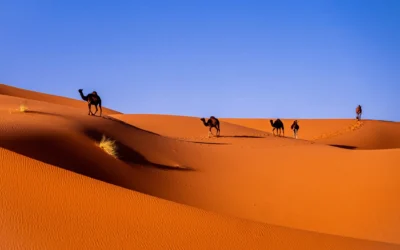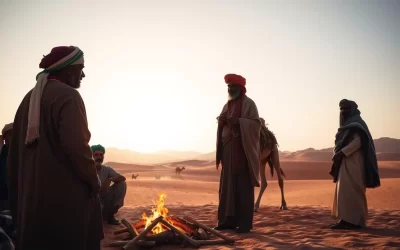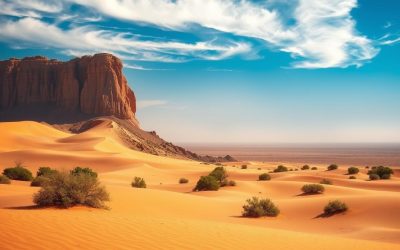✓ Accommodations✓ Flights✓ Rental Cars
Planning a trip to Western Sahara requires understanding its unique climate, which varies significantly between the coastal regions and the desert interior.
The region’s climate is influenced by its geography, with Mediterranean effects on the coast and harsh desert conditions inland. As you prepare for your trip, it’s essential to know when to visit to make the most of your travel experience.
You’ll find that spring and fall are the ideal times to explore Western Sahara, offering comfortable temperatures for outdoor activities. By understanding the seasonal patterns, you can plan a weather-savvy trip that maximizes your comfort and enjoyment.
Understanding Western Sahara’s Climate
Understanding the climate of Western Sahara is crucial for planning a successful trip to this unique region. Western Sahara’s geography plays a significant role in shaping its climate, with two distinct climate zones: the coastal region and the interior desert.
Geographic Influences on Weather Patterns
The geography of Western Sahara significantly influences its weather patterns. The coastal region benefits from Mediterranean influences, resulting in milder temperatures. In contrast, the interior desert is characterized by extreme heat and dramatic temperature fluctuations.
The Two Climate Zones: Coastal vs. Interior Desert
You’ll discover a stark contrast between Western Sahara’s coastal zone, which enjoys Mediterranean influences with milder temperatures, and the interior desert with its extreme conditions. Coastal areas benefit from cooling ocean breezes that moderate temperatures year-round. The interior desert experiences dramatic daily temperature swings, where daytime heat can exceed 100°F (38°C) before plummeting at night.
| Climate Zone | Characteristics | Temperature Range |
|---|---|---|
| Coastal Region | Mediterranean influences, mild temperatures, cooling ocean breezes | Moderate |
| Interior Desert | Extreme heat, dramatic temperature fluctuations | High to very low |
Understanding these two distinct climate regions will help you pack appropriately and plan activities suitable for each region’s unique conditions.
Western Sahara: Best Months for a Weather-Savvy Trip
To make the most of your Western Sahara adventure, consider the best time to visit. The region’s unique climate means that certain periods are more suitable for travel than others.
Spring (March-May): The First Ideal Window
Spring is an excellent season to explore Western Sahara, with mild temperatures making it ideal for outdoor activities. During these months, you can enjoy the natural beauty of the region without the extreme heat of the summer.
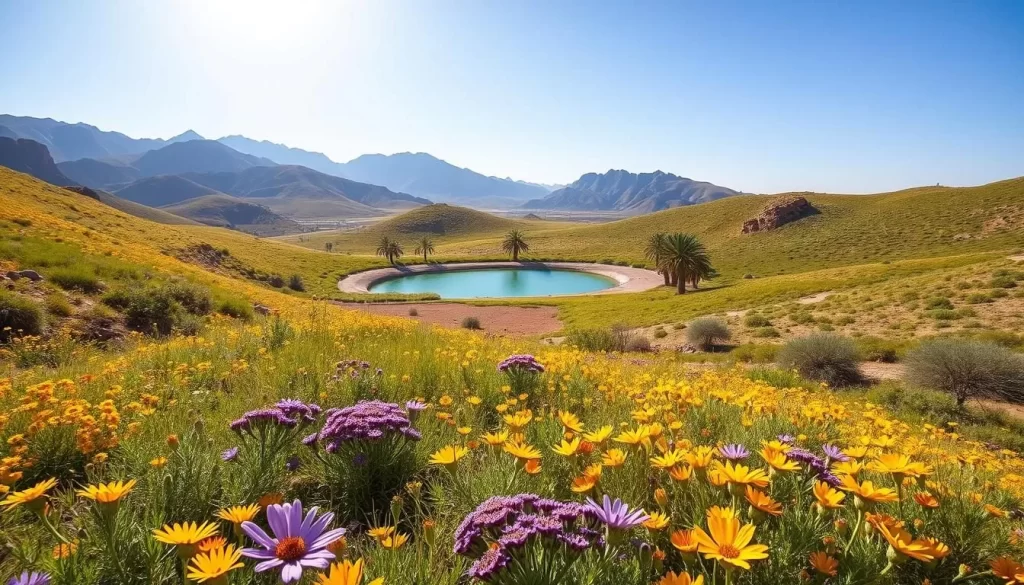
Fall (September-November): The Second Perfect Period
Fall, particularly from September to November, is another excellent period to visit. The temperatures range from 69°F to 83°F (21°C to 28°C), offering warm days and cooler nights. This season is perfect for exploring historical sites and enjoying the outdoors.
| Season | Months | Temperature Range (°F) |
|---|---|---|
| Spring | March-May | 65-75 |
| Fall | September-November | 69-83 |
Seasonal Weather Breakdown in Western Sahara
To make the most of your trip to Western Sahara, it’s vital to understand the seasonal weather breakdown. The region’s climate varies significantly across different seasons, impacting the travel experience.
Spring: Mild Temperatures and Blooming Landscapes
During spring (March-May), Western Sahara enjoys mild temperatures, making it an ideal time to visit. The landscapes bloom, adding to the region’s beauty.
Summer: Extreme Heat and Clear Skies
Summer brings extreme heat, with clear skies dominating the region. Temperatures soar, making it essential to plan accordingly.
Fall: Cooling Temperatures and Stable Conditions
In the fall (September-November), temperatures cool down, and conditions become more stable, making it another favorable period for visiting.
Winter: Cool Days and Cold Nights
Winter in Western Sahara (December-February) brings cool days with temperatures around 65°F (18°C) and cold nights that can drop to the 40s°F (4-9°C). This season may see occasional rainfall, especially in coastal areas. You’ll need to pack layers for your trip, as the temperature can fluctuate significantly between day and night.
Coastal Region Climate Guide
The coastal area of Western Sahara boasts a unique climate that differs significantly from its desert interior. This distinction is primarily due to the moderating influence of the ocean, which keeps temperatures relatively stable throughout the year.
Mediterranean Influences and Ocean Breezes
The coastal region of Western Sahara experiences a Mediterranean climate, characterized by mild winters and warm summers. The ocean breezes play a crucial role in maintaining moderate temperatures, making the coastal areas more pleasant than the scorching desert interior. As you explore this region, you’ll appreciate the gentle climate that allows for a wide range of outdoor activities throughout the year.
Monthly Temperature and Rainfall Patterns
Understanding the monthly weather patterns is essential for planning your trip. The coastal region enjoys warm temperatures during the summer months, typically around 80°F (27°C), while winters are mild, rarely dropping below 50°F (10°C). Rain is scarce, but when it occurs, it’s mostly during the winter months. Here’s a breakdown of the average temperature and rainfall:
| Month | Average High (°F) | Average Low (°F) | Rainfall (inches) |
|---|---|---|---|
| January | 68 | 50 | 0.5 |
| July | 82 | 64 | 0.1 |
By understanding these patterns, you can choose the best time to visit based on your preferences.
Desert Interior Weather Considerations
When venturing into Western Sahara’s desert interior, understanding the weather conditions becomes crucial for a successful trip. The desert environment is characterized by extreme temperatures and unique wind patterns that can significantly impact your travel plans.
Dealing with Extreme Temperature Variations
The desert interior experiences significant temperature fluctuations between day and night. Extreme heat during the day can be followed by cool nights, requiring travelers to pack layers for their journey. Understanding these variations is key to planning your activities and ensuring your comfort during your stay.
Sirocco Winds and Sandstorm Seasons
Western Sahara is affected by Sirocco winds, particularly during the spring months (March-April), leading to dusty conditions and sandstorms. These events can reduce visibility and disrupt travel plans. Being aware of the season and time of these wind events can help you prepare and avoid planning critical activities during such periods.
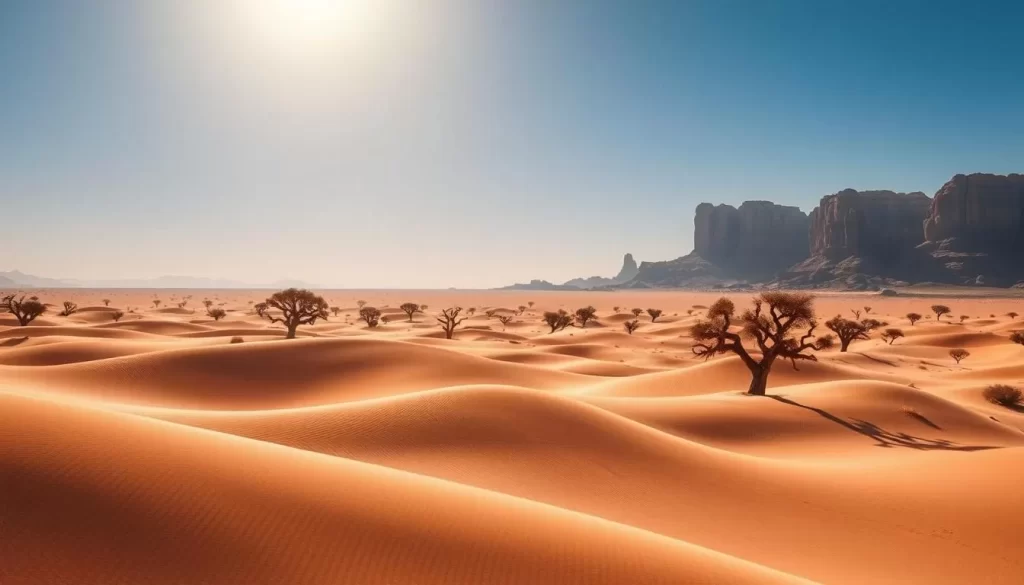
Month-by-Month Weather Guide
To make the most of your trip to Western Sahara, it’s essential to understand its weather patterns. The region’s climate varies significantly across different seasons, making some months more suitable for travel than others.
January to March: Winter Transition
During these months, Western Sahara experiences its winter season. Temperatures are cooler, especially in the mornings and evenings, making it a good time for outdoor activities. However, the weather can be quite unpredictable, with occasional rainfall.
April to June: Spring Perfection
Spring is one of the best times to visit Western Sahara. The temperatures are mild and pleasant, ranging from 70-85°F (21-29°C), making it ideal for exploring the region’s landscapes and cultural sites.
July to September: Summer Heat
Summer brings extreme heat to Western Sahara, with temperatures often soaring. It’s essential to stay hydrated and plan activities for the cooler parts of the day.
October to December: Fall into Winter
October and November offer pleasant temperatures, making them part of the region’s second “perfect” travel window. December marks the transition to winter, with cooler temperatures and an increased chance of rainfall, particularly in coastal regions.
| Month | Temperature Range (°F) | Weather Conditions |
|---|---|---|
| October | 70-85 | Pleasant, moderate temperatures |
| November | 65-80 | Warm days, cool nights |
| December | 55-70 | Cooler, increased chance of rainfall |
Planning Desert Adventures Around Weather
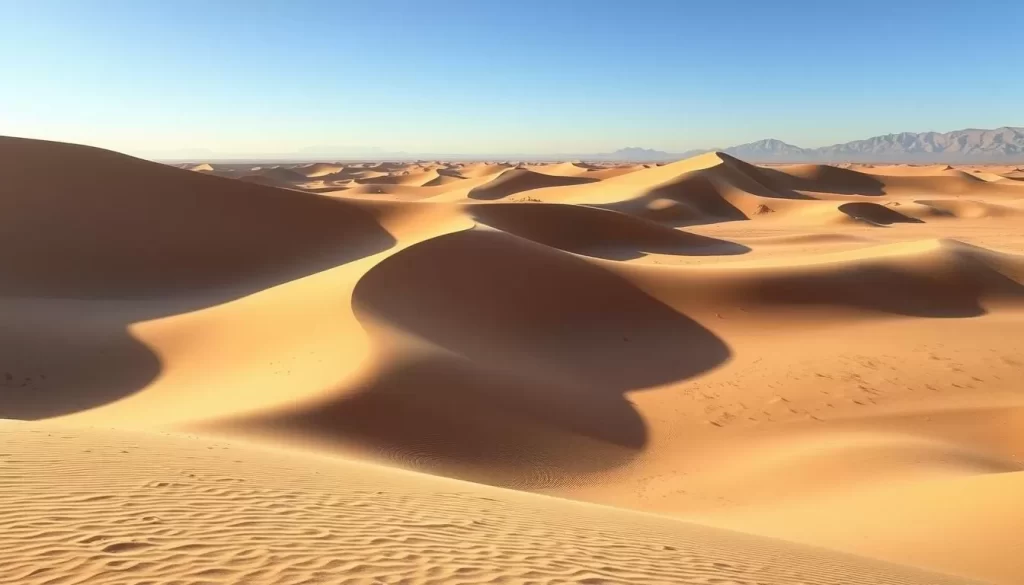
Embarking on a desert adventure in Western Sahara necessitates a thorough understanding of the local weather patterns. The desert climate is known for its extremes, making it crucial to plan your trip during the most favorable times.
Best Times for Camel Treks and Dune Exploration
The ideal time for camel treks and dune exploration in Western Sahara’s desert is during the spring (March to May) and fall (September to November). These periods offer mild temperatures and stable weather conditions, making them perfect for desert tours. The clear skies and comfortable temperatures allow for an immersive experience in the vast desert landscapes.
Safety Tips for Desert Excursions
When venturing into the desert, safety should be your top priority. To navigate the desert heat and conditions safely, it’s essential to stay hydrated by carrying at least 4-5 liters of water per person per day. Proper sun protection, including wide-brimmed hats, high-SPF sunscreen, sunglasses, and lightweight, long-sleeved clothing, is also crucial. Traveling with experienced local guides who understand the weather patterns and emergency procedures can significantly enhance your safety. Additionally, being aware of the signs of heat-related illness can help you respond quickly and effectively.
Coastal Activities and Weather Timing
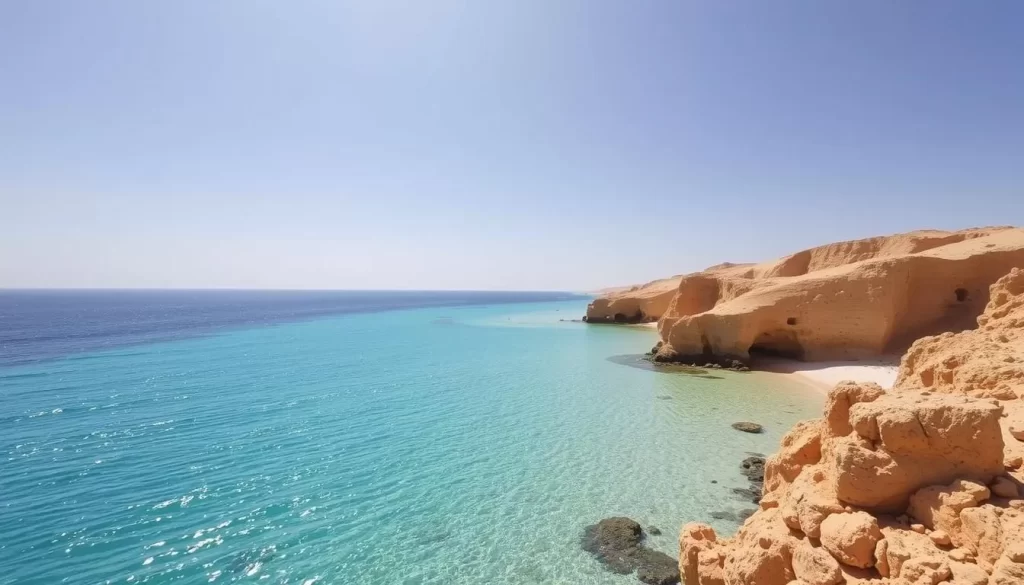
Understanding the weather patterns along Western Sahara’s coast is crucial for planning activities. The coast offers a range of experiences, from water sports to leisurely beach activities, all influenced by the season.
Beach and Water Activities Calendar
The best time for beach and water activities varies throughout the year. Spring (March to May) and fall (September to November) are ideal for most water sports due to moderate winds and stable sea conditions.
Fishing and Sailing Conditions by Season
Fishing and sailing conditions along Western Sahara’s coast vary significantly by season.
- Spring and fall offer the most stable conditions, with moderate winds ideal for fishing and sailing.
- Summer brings stronger winds, favorable for sailing but potentially challenging for fishing.
- Winter can bring rough seas and unpredictable conditions, limiting some coastal activities.
By understanding these seasonal variations, you can plan your coastal activities to align with the best conditions for your preferred water sports.
Cultural Experiences and Weather Considerations
Cultural experiences in Western Sahara are deeply intertwined with the weather conditions, making some times of the year more ideal than others. Understanding these dynamics can significantly enhance your experience as a tourist.
Traditional Festivals and Their Seasons
Western Sahara’s cultural calendar is filled with traditional festivals, many of which are tied to specific seasons. For instance, certain festivals are held during the spring (March-May) or fall (September-November), when the weather is more favorable. These periods offer a great time to visit and immerse yourself in local culture.
Urban Exploration and Comfortable Timing
Exploring the cities of Western Sahara is most comfortable during the spring and fall seasons. The moderate temperatures during these periods make walking tours and outdoor sightseeing a pleasure. In contrast, the intense summer heat can limit urban exploration to early morning and evening hours, while winters require warm clothing for evening activities. Planning your visit during the best time to visit can make a significant difference in your urban exploration experience.
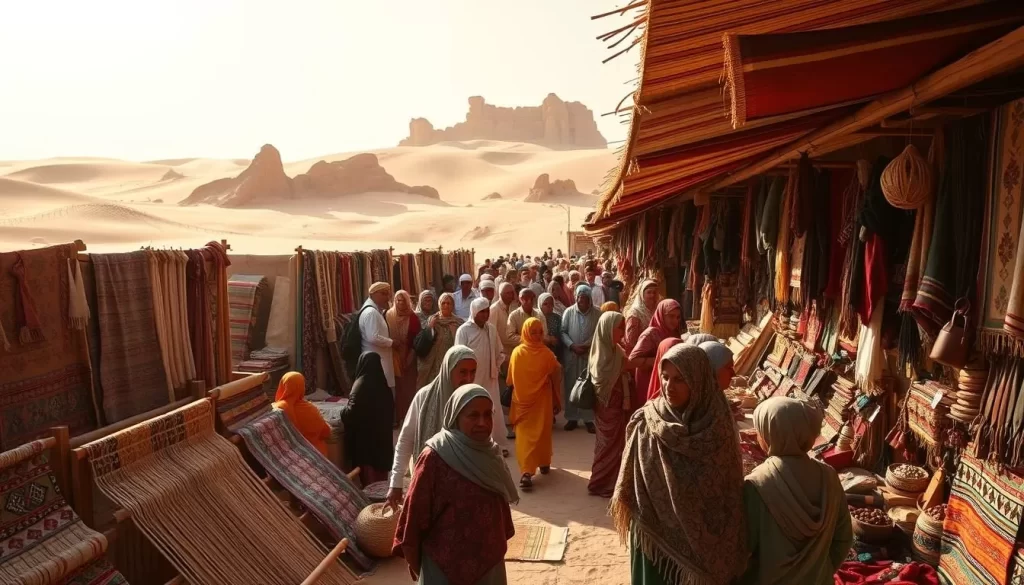
Packing Essentials for Western Sahara’s Climate
To make the most of your journey, it’s essential to know what to pack for Western Sahara’s varied weather conditions. The region’s climate can be quite diverse, ranging from mild temperatures to extreme heat or cold, depending on the season.
Spring and Fall Packing List
During spring and fall, Western Sahara experiences mild temperatures, making these seasons ideal for outdoor activities. You should pack layers for your trip, as the temperature can fluctuate significantly between day and night. Include comfortable clothing, a light jacket for cooler evenings, and sun protection for daytime.
Summer and Winter Necessities
In the summer, it’s crucial to pack lightweight, breathable clothing and serious sun protection, including a wide-brimmed hat and sunglasses, to combat the intense heat. For winter, despite the region’s reputation for warmth, evenings can be cool, especially in the desert, so warm layers are necessary. A waterproof jacket is also a good idea for potential coastal rainfall.
Weather-Related Travel Challenges and Solutions
Understanding the weather challenges in Western Sahara is key to a successful trip. The region’s diverse climate can pose several challenges, from extreme heat to unexpected rain and sandstorms.

Navigating Extreme Heat Periods
During the peak summer months, the desert climate can be particularly unforgiving. To navigate these extreme heat periods, it’s essential to stay hydrated, wear protective clothing, and plan outdoor activities during the cooler parts of the day.
Preparing for Unexpected Weather Changes
Western Sahara can experience sudden sandstorms in spring and occasional rainfall in winter. To prepare for these unexpected weather conditions, travelers should monitor local forecasts, recognize environmental signs of changing weather, and have flexible plans, including buffer days for desert excursions.
Off-Peak Travel: Benefits and Considerations
Off-peak travel to Western Sahara presents a unique set of benefits and challenges that savvy travelers should be aware of. While the region’s climate can be quite harsh during certain times of the year, visiting during the off-peak season can offer several advantages.
Travelers who choose to visit during this time can enjoy a more serene experience, as popular sites are less crowded. This allows for a more intimate connection with the natural beauty and cultural heritage of Western Sahara.
Summer Budget Travel Opportunities
Although summer is characterized by extreme heat, it’s also a period when budget travelers can find better deals on accommodations and tours. If you’re looking to save money and don’t mind the heat, summer can be a cost-effective time to visit. However, it’s crucial to be prepared for the extreme temperatures and potential sandstorms.
Winter Exploration Advantages
Winter exploration in Western Sahara offers several advantages, including cooler temperatures that make desert activities more comfortable. With fewer tourists, you can enjoy a more peaceful travel experience. While coastal areas may see some rainfall, many days remain clear and pleasant, making it an ideal time for certain activities.
Conclusion
Western Sahara’s unique blend of coastal and desert climates makes timing your visit essential. The best months to visit are during spring (March-May) and fall (September-November), when temperatures are moderate and conditions are most comfortable for exploration.
These optimal seasons provide the ideal balance for experiencing both the coastal Mediterranean climate and the dramatic desert landscapes without weather extremes. By understanding Western Sahara’s climate patterns, you can pack appropriately, plan suitable activities, and create an itinerary that maximizes comfort and enjoyment.
Whether you’re drawn to desert adventures, coastal relaxation, or urban exploration, choosing the right months for your weather-savvy trip ensures you’ll experience Western Sahara at its best. With proper preparation, you’ll be ready to embrace whatever conditions you encounter and create memories that last a lifetime in this fascinating country.
The above is subject to change.
Check back often to TRAVEL.COM for the latest travel tips and deals.
